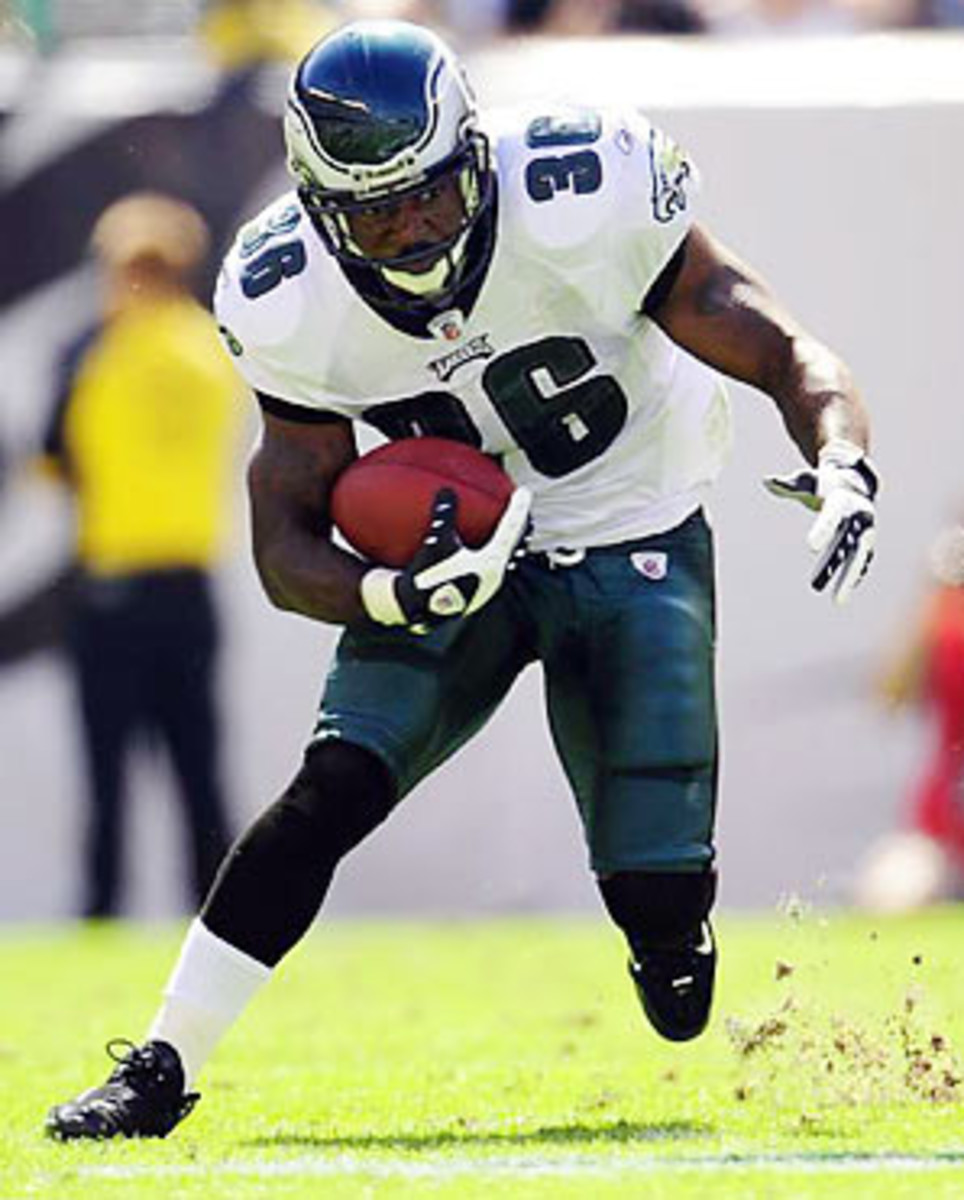
Guys like Favre can cheat calendar, but backs still hit wall at 30
The exceptions are rare. Among them: Marcus Allen, who played eight productive seasons after his 30th birthday, Walter Payton, who delivered three 1,300-plus yard seasons past his; Emmitt Smith, who managed three 1,000-yard seasons after 30; and Jerome Bettis, who scored 35 of his 91 career TDs beyond 30. Barry Sanders and Curtis Martin may have known -- or felt -- what was coming. Sanders put up a productive 1,491 yards in his last season, at age 30. But that was nearly 600 yards fewer than his previous season and his per-carry average dropped by two yards. Martin put up a huge season at 31 (1,697 yards), but then his rushing totals dropped by more than half. Those are about the only exceptions.
Consider, then, these names: Shaun Alexander, Earl Campbell, Eric Dickerson, Tony Dorsett, Marshall Faulk, Eddie George, Ahman Green, EdgerrinJames, Larry Johnson, Jamal Lewis and Deuce McAllister.
Every one of those players had at least one season of 1,300 yards of offense between ages 27 and 29. Only one, however, managed a 1,300-yard season after 30. That was Dorsett, whose carries were monitored as he rushed for 1,307 at 31. A year later, his rushing total dropped to 748. In fact, most of the great backs listed above rushed for fewer than 700 yards after 30, which in running back years seems to fall somewhere between Benjamin Button and Abe Vigoda.
"There have been no pure scientific studies regarding players over age 30, however clearly only about 13 running backs over 30 have gone for over 1,000 yards," said Houston orthopedic surgeon and sports medicine expert Kenneth R. First. "They lose some of their speed and explosiveness. They still may have the juke-type moves, but the pure speed and explosiveness fade. They lose a step."
Tomlinson was supposed to be the exception. He turned 30 heading into the 2009 season, but time and decline were not supposed to catch up to the great LT. He was different. He worked harder. "When you can play the game and you still got it, you still got it," Tomlinson said before the season. "I definitely still got it."
But he didn't.
Tomlinson became just another back last season, just like most running backs do when they reach the dreaded Three-Oh. He rushed for just 730 yards and a 3.3-yard per-carry average, which was less than half his rushing total for the 2007 season. Westbrook played in just eight games, missing the other eight with two concussions and ankle injuries. He ended the year with 274 yards rushing and only two touchdowns. Now he and Tomlinson are trying to latch on with a new team for the first time in their NFL careers.INSIDE REPORT: Philly moving on from Westbrook era
Rest assured, there are teams out there willing to take a chance on two of the most productive backs in NFL history. There always are. It is at once a tantalizing and dangerous proposition. When players like Tomlinson and Westbrook hit the open market, they still look young and still clock good times. They still have the outward physiques of Greek gods. It makes many teams believe they can eek out one or two more years from the proven stars.
But roughly 15 percent of all players hit the injured reserve list every year. Running backs are hit below the waist much more often than any other players on the field. For 40 yards, or maybe even for 40 carries, they can still run with speed and quickness. But their bodies ultimately are, "battered" much more than most players, as Dr. First put it. The explosiveness is gone. The wear and tear is too much.
Time always trips up the game's best backs. They're just slow to accept it.




